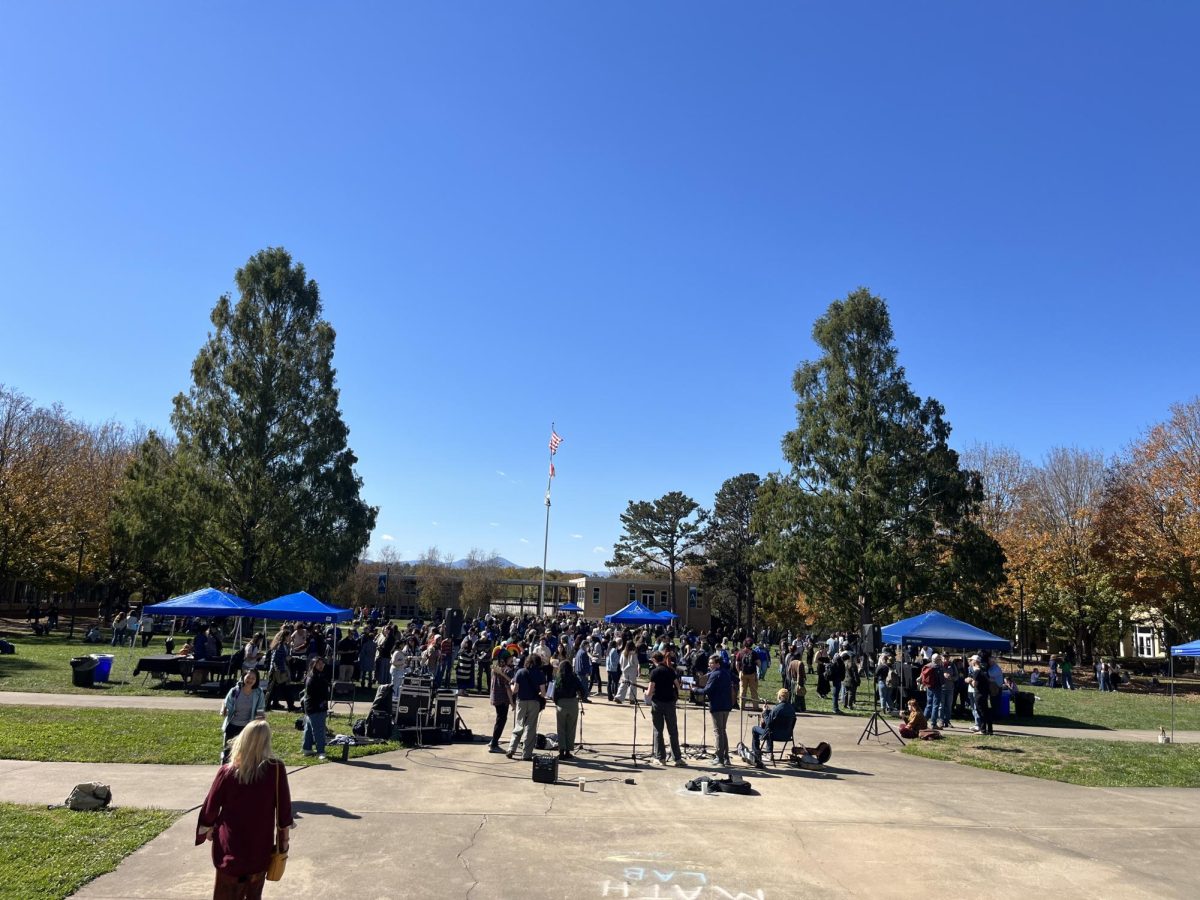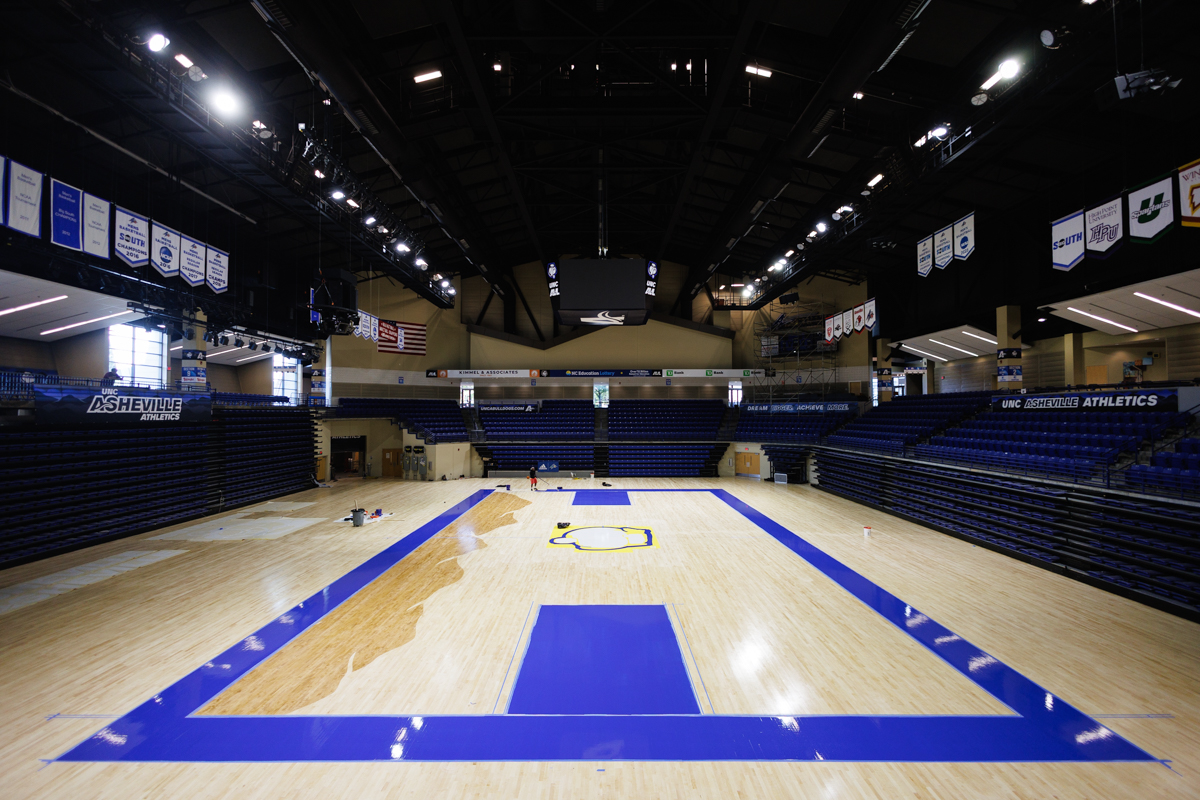
By Matt McGregor, Arts and Features Assistant Editor – [email protected]
UNC Asheville students were Hacky-Sacking, slacklining and reading in the grass when they witnessed an anomaly.
Students in starched white lab coats crossed the Quad from Karpen to Zeis Hall. Beneath their lab coats were ties and business dresses.
The Hacky-Sackers, slackliners and readers stopped what they were doing and watched with questioning faces.
“I wish I had a picture of it,” says Greene Shepherd, vice chair and pace clinical professor. “It was right there in front of the library. It was sort of like the Beatles’ Abbey Road album cover.”
They were watching the first class of the UNC Eshelman School of Pharmacy. They had no predecessors to ask about the program, Shepherd says. They entered a new frontier in 2011 in coming to UNCA, applying and attending where no pharmacy student had gone before.
“And what a brave group of people they were,” Shepherd says. “We had a plan for a campus. At the time they were applying there were no bricks and mortar to show, just vaporware. You couldn’t see the classroom, just the plans for the classroom.”
The faculty and staff consisted of four people sitting around a table with their laptops in a room that no longer exists.
Shepherd and Mollie Scott, who is now regional dean, made up the faculty. David Mitchell and James Joyce made up the staff. Joyce says they shared a printer, unplugging and plugging the USB port into their computers when needed.
“The four of us were huddled around that table,” Joyce says. “Once they got us network capability, I was hooking everybody up with jacks in the wall to get computer access.”
They were working from scratch, and on a deadline. David Mitchell, operations manager, says the construction and technological setup finished the night before classes started.
Even with the construction completed, there were still just two classrooms for the 15 people who comprised that first student body, whom Mitchell calls pioneers.
Since then, they have doubled in size. They grew from a faculty and staff of four to 10, Mitchell says.
“We intend on growing more. The space has expanded. When we started four years ago, nothing looked like this,” Mitchell says. “The layout was completely different. Now it feels like we have more of a presence. The pharmacy school has a well defined space.”
A typical class size today holds between 25 and 30 people. Mitchell says the class size of their home base at UNC Chapel Hill is around 130 students.
Sarah Dobbins, a third-year student, says she didn’t want to be just another face in the crowd. She chose the UNC Eshelman School of Pharmacy for its small community relationships.
“Being on the Asheville campus gives you the best of both worlds – the privilege of obtaining a world-class education with the advantage of a small-town feel,” Dobbins says.
Mitchell says the UNCA branch administration intends to keep class sizes small. These allow for more one-on-one interactions between students and teachers.
“Each of us wear more hats,” Joyce says. “We don’t necessarily stay in one particular box. If somebody needs some help they give it or they get it.”
The campus evolved its own culture from this closeness. Stephanie Kiser, director of rural health and wellness, says this culture thrives on efficiency due to everyone’s accessibility.
“We offer a smaller campus experience,” Kiser states.
Students know the teachers, and teachers know the students.
Maybe this sense of community rubbed off on Franklin Rodriguez, a third year student. Rodriguez currently works at Asheville Compounding Pharmacy on Merrimon Avenue.
Unlike college students who dislike the jobs that carry them through college, Rodriguez says he would be glad to continue working there after graduation.
Still, there was competition over where the school would even go, Kiser says. It came down to Greensboro or Asheville.
Shepherd says the city of Asheville, the Chamber of Commerce, the Mountain Area Health Education Center and Mission Hospital came together to make a pitch to the Board of Governors.
Shepherd says it was something of a no-brainer. Asheville was already a celebrity in the pharmacy world. Mission Hospital and the city of Asheville had joined in the ’90s to create the Asheville Project.
City officials examined healthcare costs, Shepherd says. They researched ways to reduce the costs while increasing efficiency. A partnership formed among the city, Mission Hospital, and the Mountain Area Health Education Center. Pharmacists took on a more active role in making sure medicine was properly taken, while promoting health and lifestyle changes in the patient.
“The big thing was that it demonstrated that using pharmacists properly you could improve a patient’s outcomes and decrease healthcare costs for the city dramatically,” Shepherd says. “City workers, paired with pharmacists, would make sure people were using their medications properly.”
The project gained national attention, paving the way for the school.
Now, Asheville is an innovative place to practice medicine.
Categories:
UNC Eshelman graduates first pharmacy class
October 28, 2015
0
More to Discover


















